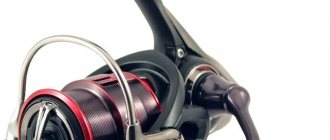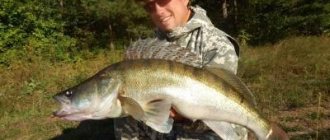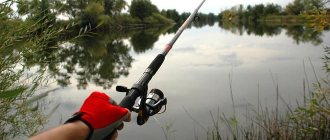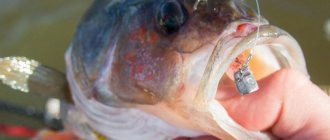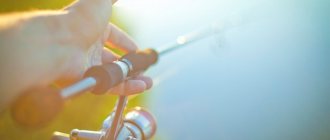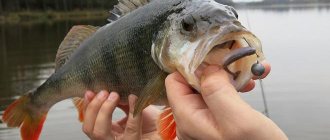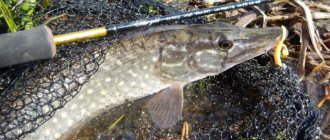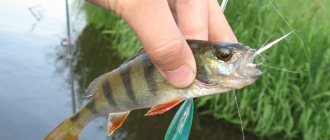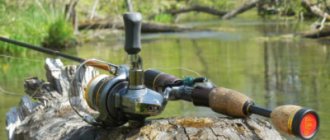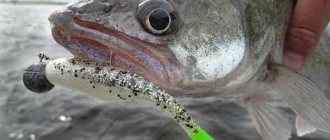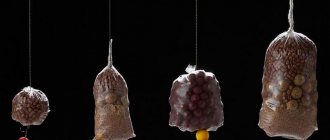Microjig is a type of jig fishing that uses the smallest baits (0.5 - 2 inches) and delicate tackle, most often with a weight of up to 5 grams. Belongs to the ultralight class (UL).
A separate class is the so-called nanojig. Fishing with the most extremely small baits using jigs from 0.05 grams to a maximum of 1 gram. Despite all its similarities, this type of spinning has a lot of differences and you should not mix these concepts. Everything is different here - fishing tactics and strategy, choice of gear and bait, philosophy in general. And we will return to this issue separately.
In this review article we will try to reveal the basics and some of the secrets of microjig fishing in sufficient volume for beginners - we will consider the troubling questions of beginners. Starting from choosing equipment and collecting the first ultralight tackle to the first cast and landing fish. What is important to know when fishing with microjigs, how to choose them and serve them to picky fish, what is the strategy and philosophy of the ultralight fisherman?
Perch is the most frequent guest among microjigits
What caused the wave of popularity of microjig and the growth of the population of “microjigits”
Microjig fishing is gaining popularity among spinning anglers, like an epidemic that has literally gripped all anglers, and there are several reasons for this:
- Species composition of possible prey. It's always a mystery who will be on the hook. The ubiquitous perch, toothy grass, or maybe quite peaceful silver bream, carp or tench?
- The number of bites on the lightest tackle and small baits is incomparably greater than with their older brothers in arms.
- The pilot and microjigit enjoy every fight; even a small predator or a “bel” on the thinnest tackle gives an active fight.
- Mikrushniks catch on any body of water, at any time, and any fish - predatory and peaceful. This is especially important for city dwellers, who only manage to catch more serious fish on larger bodies of water on vacation. And with an ultralight you can fish in almost any puddle within the city in the evening after work.
- Minimum of all necessary equipment. Tackle, bait, additional equipment. And this means comfort and mobility, which gives additional opportunities to the spinner.
- Relatively cheap. If high-quality gear for microjig is comparable in cost to gear of other types, then there is no need for additional equipment and accessories. The microjigit does not need a boat, an echo sounder, a satellite navigator, or expensive wobblers.
- Ultralight spinning rods evoke emotions that are sharper and more memorable than other fishing methods. And this is the main pillar on which the popularity of microspinning rests.
Modern microjig is no longer the preserve of only athletes; now it is truly a popular fishing method!
Microjig fishing
A reservoir is an individual habitat for underwater inhabitants, with its own microclimate and its own characteristics. Therefore, you should not get hung up on one type of wiring; if one option does not work, then it is recommended to try with the second or third.
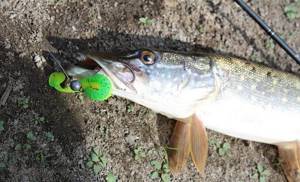
Micro jig wiring
The classic “step” involves fishing in the current, where you make 2-3 turns of the handle and stop before the bait hits the bottom surface. This type of wiring is more suitable for beginner anglers.
The second method of baiting involves pulling the bait towards you by 10 cm while using the tip of the spinning rod. After which, the slack in the line is removed and the tip of the tackle is lowered to its original position.
Dragging the bait is used in reservoirs with calm water. It is pulled through either by reeling in the fishing line or the tip of the rod. This technique most often provokes peaceful fish and provokes them to capture.
Tactics
Microjig fishing is usually carried out on dumps in rivers where predatory fish live. To find the fishing point, it is advisable to use a Cheburashka weight. After the distance to the drop has been determined, they begin to install the bait on the spinning rod.
It is better to make casts in a “fan” manner, against the current. The signal that a bite has occurred will be a characteristic jerk or blow that will be transmitted to the tip of the spinning rod. The hook must be sharp and confident. Fishing occurs without unnecessary fuss.
Microjig is an effective method of fishing for both predatory and peaceful fish, which even novice fishermen can do. Properly selected tackle and bait will be the key to good results.
What can become prey
One of the advantages of the ULetchik is that the species composition of its catch is not limited only to predatory fish. Often peaceful representatives are also caught on microjig baits.
Of course, the main trophy when fishing with microjig tackle is the ubiquitous perch, which is caught throughout the season. You can catch it on the edges, along and above underwater vegetation, in bays and currents.
Also, from early spring to late autumn, pike, pike perch, chub and roach are caught on edible microsilicon; foals are not disdainful.
But besides this, throughout the warm water you come across relatively peaceful fish - rudd, roach, silver bream, sabrefish, grayling, trout, bream, crucian carp and even tench. The last two, however, are most often used for the most nano-jig silicone micros and tiny foam rubbers.
It’s very exciting and exciting to catch schooling sabrefish using a microjig in early spring, when they roll down from their spawning grounds.
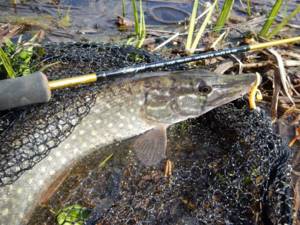
Gear selection
The selection of gear should be approached with great responsibility, since the success and comfort of the event will depend on it. The fishing tool must have sufficient sensitivity and be made of quality materials. Particular attention should be paid to its balance.
Rod
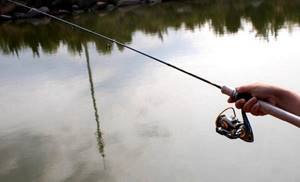
Microjig fishing can be done on a rod 1.5-2.7 m long, but the best results are observed when using spinning rods 1.8-2.4 m long. When working with long rods, it is possible to cast the bait as far as possible, and with short rods it is easier attract the predator's attention through spectacular play.
The action of the rod for microjigging is fast, which allows you to constantly monitor the behavior of the bait under water and hook it with a slight flick of the tip. The spinning tip can be of two types:
- Tubular, characterized by a high degree of rigidity. The tip, which is hollow inside, is capable of providing excellent sensitive contact with the hand and effectively dampening the jerks of the predator. The main advantage of this type of ending is comfortable and safe fishing.
- Solid, distinguished by a high degree of susceptibility. It is good to use for examining the bottom, since it is able to sense all its changes. When fishing for prey, you should act carefully; aggressive jerks can damage the tip.
For information! The test load of the rod is selected taking into account the weight of the baits used. The upper limit of the spinning rod is 12 grams.
Coil
When choosing a reel for microjigging, it is better to give preference to spinning models with sizes 500–2000. As a rule, the requirements for a reel in jig fishing are not as high as for twitching. The main thing is that it is a reliable “meat grinder” like Daiwa and Shimano . The advantage of the reel will be the presence of 1-2 spare spools, which will allow you to have two options with different types of fishing lines.
Line and leashes
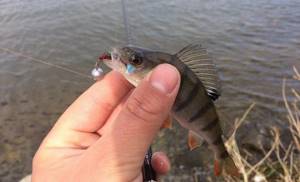
Fishing thread is suitable for both monofilament and braided types, with a breaking load of about 3 kg. It is more effective to use monofilament for fishing in the coastal zone, and for hunting cautious predators. But the use of braided cord will be relevant for casting bait at a distance of over 15 m from the shore. With its help, the tackle will acquire higher sensitivity and will allow for high-quality wiring. And this is very necessary to track any contact of the bait.
Gear for microjigging must be equipped with a leash in order to be able to:
- camouflage the gear at the fishing point;
- protect it from abrasive damage;
- protect from pike teeth.
When fishing for pike with a microjig, only metal leashes can be used to protect the tackle from being cut by the toothy predator. As an option, you can use fluorocarbon leaders, but if the cross-section is within 0.4-0.5 mm. But this design is more suitable for catching pike perch, peaceful fish, and perch using a microjig.
Accessories
Considering the ultralight nature of the equipment, it is not advisable to use swivels and carabiners. You can mount a jig head or hook directly to the main thread or leash. This technique will make it possible to create maximum stealth of the gear.
Jig heads and hooks
When microjig fishing, it is equally effective to work with equipment made from jig heads, and equipment that uses single or offset hooks with separate sinkers, or without them at all. The latter solution is more advantageous, since the game with this design of equipment is smooth and realistic. To attract the attention of passive prey, it is recommended to fish without weight, in order to provoke the target by slowly falling the bait.
Assembling the first microjig tackle
Microjig tackle should be light and perfectly balanced.
The lightest rods with a test weight of up to 2-5 grams, miniature reels 800-1000 according to the Shimano classification and the thinnest monofilament lines or slippery braids are used.
Assembling gear for microjigging is a whole science. And we will consider this issue in detail in separate articles. Now let's go through the basics.
Form
Fishing takes place over short distances, and therefore there is no need for long spinning rods. The optimal length would be around 1.9-2.2 meters. The advantage of such rods is that they are the most sensitive and allow you to control every meter of wiring - in microjigging, high sensors are of maximum importance.
Also, such sticks are as light as possible, elite models weigh 70-100 grams. Working with them is a pleasure - you don’t get tired fishing all day long.
Such sticks are available in all series aimed at ultralight fishing. Both the highest class from Zemex, Major Craft, Graphiteleader, Evergreen, and budget Favorite, Crazy Fish and others.
Since microjig fishing requires working with the smallest possible weights, the test should be in the region of 0.5-5; 1-7; 2-10 grams.
It is worth considering that UL spinning rods can have two types of tips, which greatly differs them in their operation and behavior when retrieving and casting on different types of lures from the test range:
- Glued-in (Solid) nod-type tip. Solid and very responsive. Works especially well in the early-mid test range. Closer to the top it begins to fall through. Does not accept aggressive jerking drives in the upper range. Let's say on a solid with a stated test of 0.5-5, it is comfortable to work with weights of 0.6-3 grams. With heavier weights, the tip bends completely and rebounds only when it touches the bottom. We recommend such sticks only to those fishermen who have already gained some experience in microjigging, or who plan to fish with jigs and nanojigs.
- Classic hollow tubular tip . The standard works best in the last three quarters of the test and even has a power reserve. That is, it does not fail when the weight of the bait is higher than that stated by the manufacturer. In addition to microjig, it allows you to pull wobblers and spinners. This is a more optimal option for beginners who just want to master microjig fishing.
In microjig fishing, the previous factor is more important than the structure of the spinning rod as such. It is only worth noting that a microjig spinning rod should easily cast microbaits. What is worth either checking in person, if possible (for example, at many specialized exhibitions you can try casting and playing the blank in improvised pools), or read reviews on forums, or borrow tackle from familiar colleagues.
For beginners, a fast system is often recommended, but this is not a dogma. Since it is worth considering that with a semi-parabolic form you can cast the bait further and better track its behavior. But such a stick is more difficult to work on scales that are close to the top declared for a particular model. Such a spinning rod begins to sink greatly, which does not allow you to fish with complete comfort. This is worth considering.
A specific model should be selected so that it fits in the hand, paying attention to the price tag, and also based on possible fishing conditions.
Coil
When selecting a reel, the main rule is the ideal balance for the rod.
It is also important that the spinning reel has maximum compactness and minimum weight. It is desirable to have the latest technologies that improve the quality of casting, allow you to accurately lay the line without dips and sagging, and prevent tangles and twisting of the line. Shimano, Daiwa, Spro, Ryobi have such reels.
Shimano size 1000 is the most common option among “flyers”.
It’s good if the reel has several replaceable spools, which will allow you to quickly change the diameter of the fishing line/braid based on fishing conditions.
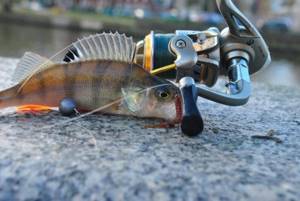
The reel matches the rod - delicate, light and smoothly working
Cord/monofilament
Both monofilament fishing line and the thinnest slippery cord can be used. The monofilament allows you to cast the lightest bait further and smooth out the jerks of the fish, while the cord allows you to better track the bite and make high-quality animation.
But it is worth taking into account the fact that the advantages of a braided cord appear on scales of 4-5 grams and above, with smaller ones the sensitivity and sonority of the braid disappears - the work of the bait can only be felt in the hand by nuance and with proper experience.
And of course, fishing line is almost always preferable when catching peaceful fish that are careful in their bites. It is more invisible in the water, and also stretches, which makes bites more active and confident. Braid immediately gives resistance to the fish and often the bait is spat out after the first poke.
Fluorocarbon is also popular; it is stiffer than fishing line, but almost invisible in the water. Can be used both as a leash and as a main winding. Allows you to better monitor the behavior of the bait and the bite, but at the same time having the positive qualities of the fishing line.
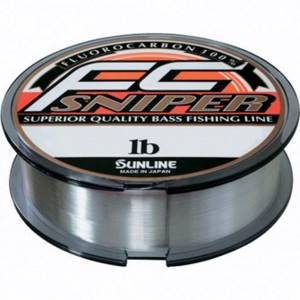
You should choose based on specific conditions; for this, a set of spools is useful. On super small weights - definitely fishing line or fluorocarbon, on medium ones they come from the gear as a whole, transitional weights of 5-7 grams and above already work better with cords, although fishing line is not excluded.
Accessories
Accessories (various types of fasteners, for example fly fishing) are used either in the smallest numbers 000, or all baits are tied directly to the fishing line. In microjig there is no need to use swivels and winding rings.
Choosing a spinning rod for ultralight is not an easy task, especially for beginners. You need to pay attention to many different factors without overpaying.
Microjig equipment, video
A video with a master class on microjigging, conducted by Roman Miturich, is dedicated to the basics of the method. The very concept of microjig is considered, the criteria that are inherent in it and with which it, in principle, begins, are outlined. It tells about the gear used in it, attachments, and wiring styles.
First, the conversation begins in the video about a spinning rod for microjig and how to choose it for an angler starting his journey in this style of fishing. The master’s advice is simple and clear: you can buy any modern spinning rod that has a small cast. Although, if possible, it is better to immediately purchase rods specially produced by manufacturers for microjigging.
Such fishing rods differ from conventional ones in that they are more precisely balanced and are “tuned” to small baits that are more sensitive. Their main feature is the insertion of a monolithic mustache tip, which makes the rods very “sensitive” in comparison with even low-test conventional products.
Microjig rods have a test value of no more than 10 g. Although today, in the product lines of many manufacturers, models have appeared whose test is determined by narrower intervals. The latter allows you to more accurately adapt to certain attachments and wiring styles. But, naturally, it is more wasteful for the angler due to the need to have several different “sticks”.
There are no special criteria for choosing a reel for microjigging. There are no power casts in the method, more gentle jigging, and no baits with high resistance. Therefore, the coil can be selected from economy class products. Although it should, of course, be reliable, smooth running, and without extraneous noise. This is what allows the angler to subtly feel what is happening at the end of the fishing line/cord.
It is advisable to choose a small reel, light in weight and with as many spools as possible. The latter allows you to have different fishing lines/cords in stock, which can be quickly changed for specific fishing conditions (current, calm water, long casting, etc.). At the beginning of a fisherman’s “career,” one reel may be enough, but over time, an understanding of the intricacies of microjigging and the need for a wider range of fishing lines will come, even on one fishing trip.
An important issue in microjigging is the choice of fishing lines or cords. A microjigist must have both in his arsenal. Priority in fishing is given to what will give the greatest effect in specific conditions. Although the line on the reel is, in general, more interesting, it allows you to work with the bait more clearly, and is sensitive to its slightest changes in wiring. And fishing itself with him is more exciting, more dynamic, more exciting.
At the initial stage, you should use fishing line for microjigging. And it’s better to start with 0.14 mm. This is the balance that will allow you to experience the delights of microjig and not be disappointed in it due to too rough equipment. Thicker fishing lines “coarse” the tackle, negating the play of light baits. Thinner ones (the usual size for experienced fishermen and athletes is 0.12 mm) have low tensile strength and, without proper practice, often break even when fishing for small fish.
Microjig uses special baits and equipment. The classic option is jig heads with a weight of 1.5...5 g with a hard-soldered hook. This is where you need to start learning the basics of the fishing method. Moreover, it is advisable to have a whole set of heads in your arsenal, which allows you to change fishing conditions simply by quickly changing them.
This set of jig heads is universal and allows you to fish depths up to 8...10 m (5...5.5 g) and the surface layer of water (1.5 g). With their help, you can perform most of the postings known in microjig. Having mastered this type of equipment, you can begin to try others: for example, “Cheburashka” with a hinged hook connection, offset hooks, double hooks. They will expand the capabilities of microjig, in particular when fishing in “difficult” places, in the grass, in snags.
There are a lot of baits for microjigging. It’s better to start with a regular twister 1.5″ long. It’s worth picking up several of their colors and stopping there first. Over time, the arsenal of attachments can be expanded by purchasing vibrating tails of approximately the same size.
Microjig fishing begins with casting. Next, the bait is allowed to sink to the bottom (fixed by the position of the rod tip). Retrieving consists of short pull-ups and stops (similar to a jig, but with throwing up the rod and taking out the slack of the line when lowering the bait to the bottom). It is possible to conduct at half-water, when the nozzle is continuously slowed down/accelerating the winding of the reel. In the latter case, light jig heads are used more often.
Micro jig baits
The baits used are the lightest and smallest - various vibrotails, twisters, crustaceans, slugs, worms, larvae and other crabs.
The vast majority of minifish fishermen prefer edible baits to ordinary ones.
There are a lot of specific baits. It is not possible to review them within the framework of a review article for a beginner. We recommend purchasing several different sizes (1-2 inches), shapes (worm, slug, nymph, twister, vibrotail, crustacean), flavors (garlic, anise, salt) and colors (acid, Coca-Cola, machine oil, color with sparkles, dull colors, light and dark natural) from trusted manufacturers, not necessarily top ones. You shouldn’t immediately chase the price without trying and understanding for yourself all the delights of microjig.
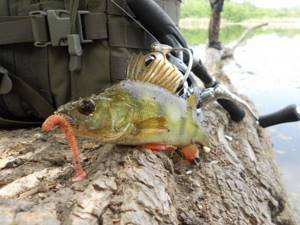
Crazy Fish Vibro Worm
We recommend the following manufacturers:
- Lucky John;
- Bait Breath;
- Crazy Fish;
- Fanatik;
- Kosadaka;
- Mann's and others.
Eared fish and ordinary jig heads, jigs and shotguns clamped onto the shank of the hook are used as weights.
The weight fluctuates around 0.5-7 grams, and the most popular mini is around 2-3 grams.
Small tungsten jigs are very good - they are compact and long-range, compared to their lead counterparts.
Eared sinkers are attached through regular or offset hooks.
The following hooks are suitable:
- Owner Slim Offset 10, 12 numbers - small offset printers of standard shape;
- Owner S-59 - with a large ear for standard eared rigging;
- Owner offsets 5109 - small offsets for the smallest baits;
- Owner offset 5133 Down Shot Offset - driven ones are good for worms and slugs;
- Varivas Inch Hook Regular is a series of micro jig offset hooks.
- The Decoy Single 26 hook is a popular series from Decoy for non-snagging installations.
Among the manufacturers we note Decoy, Ovner, Jamakatsu. This is quality, sharpness and a large assortment.
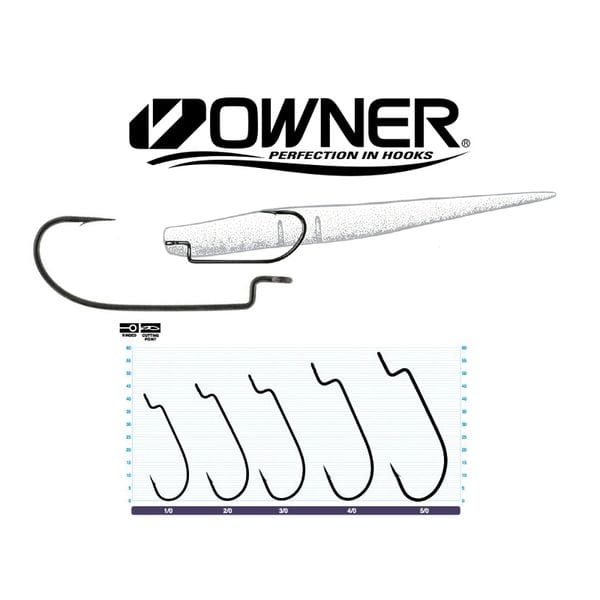
Owner 51639 slim offset

Equipment for micro jig baits:
How to fish with a microjig - a necessary educational program for beginners
It cannot be said that microjig is the most interesting or outstanding method of spinning fishing. This is just another method and method, for mastering which it is not enough to collect the appropriate gear, you need to understand it from the very basics in order to experience the beauty of such fishing.
The action of the bait, the retrieve and the bite are most often monitored by the tip (in the presence of a cord and larger baits) and by the sag of the fishing line on the smallest scales. It is important to be able to track and separate the behavior of the bait from the fish bite; this comes with experience.
Any unusual behavior of the fishing line is a bite.
Microjig is a short but accurate cast, almost always. You often have to cast to local promising points. Therefore, it is better to hone the casting technique, especially for beginners and on new gear, on land.
If perch or other fish often disappear, you should change the line to fishing line/flure, and the bait to a smaller one.
Crucian carp on ultralight:
Micro jig wiring
In microjig it is important to master as many animations as possible. This will allow you to diversify the behavior of the bait and cause the fish to bite.
Three methods are used - playing with a reel, pulling with a rod, or a combination of both on one retrieve.
Short rhythmic jerks with or without pauses are good at provoking perch, pike and pike perch to bite.
A double jerk, pause 1/2 second and repeat is also good for perch.
For peaceful fish, uniform movement of active baits is also used, as well as various animations almost on the spot with play along in the water column, if these are slugs/worms and other passive baits. A kind of dance occurs with the bait with a minimum speed of retrieving in the horizontal component of the retrieving.
The passive predator responds well to the movements of the bait on the bottom, without active jerks.
A classic step along the bottom or in the water column is possible either on scales from 3 grams, or with the most delicate high-quality tackle, or by monitoring the behavior of a slack fishing line - but this last method of indicating bites is suitable for an experienced fisherman - a microjigit.
You should not expect a bite in the hand on a characteristic microjig on small scales!
Also a good provocateur will be animations with simultaneous rotation of the reel with pauses and playing along with the rod using jerks and pulls of various frequencies and amplitudes. This is a labor-intensive and technically complex process, but it gives excellent results.
In general, it is good to vary the types of animations within one posting and select a new set of animations for each new posting. We play with bait and a game with the fish - who wins?
Catching perch in the spring with a microjig:
Tricky microjigging for perch in a video master class from an expert:
Tactical fishing scheme: search, presentation, weather
A good result when fishing with a microjig is obtained by constantly moving around the reservoir in search of promising sites. Beginning microjiggers, having adopted experience from “hard” fishing for channel or pit pike, can cast even a promising place for hours - this is a road to nowhere. You need to move on if there are no bites after 5-7 casts.
If such a catchable place is found, you need to purposefully catch it with precise, accentuated casts, but also without staying on it for very long - this is boring and not promising in terms of finding new, more interesting points/fish. So, for example, you can switch from perch to a school of rudd, then find a larger perch, and then find a site of grass pike and vice versa.
Microjig - movement!
Also, don’t forget about changing baits - active/passive, shape, size, color, everything can make a difference in microjig fishing. The fish quickly gets used to one bait and stops actively reacting to it. Therefore, it is necessary to either change the fishing location, or change the bait, or both.
Fishing in the rain gives good results, especially when it follows a long period of heat and the air and water temperatures drop.
The movement of schools of perch, rudd, and roach can be tracked by the behavior of seagulls, which always circle above the schooling fish, and literally follow on the heels of such boilers.
Homemade lures for microjig fishing. How to make it yourself
Fishing for perch with a microjig has become popular among spinning anglers quite recently and, despite the seemingly thin gear at first glance, you can catch both small perch and hefty trophy humpback salmon with it. Catching large perch is a very exciting and exciting activity. However, for this it is necessary to correctly select all the components of the tackle, select a suitable location, and determine the appropriate wiring technique.
Microjigs are very small silicone baits that belong to the group of spinning jig baits. In color and shape they are identical to the larger and heavier “brothers” of their group, but in size and weight they differ significantly from them. Among them we can distinguish passive baits (crayfish, worms, slugs) and active ones (twisters, vibrotails); baits made of regular and edible silicone.
Gear used
- For this type of fishing you will need an ultralight or light spinning rod with 5-7 grams of dough, 2.1 meters long with a comfortable cork handle and a small reel with a standard size of 2000-2500. When fishing, both expensive forms of well-known brands (Shimano, Daiwa) and spinning rods of budget brands are used. For example, ultra-light and light spinning rods from Zemex have proven themselves to be quite good.
- The jig head can be attached either closer to the tail of the bait (twisters and vibrotails) or at the very edge (crustaceans). In places with a high probability of snagging, an anti-snagging device is additionally installed on it, consisting of a loop made of thin spring wire, which allows you to protect the hook from getting caught and moves freely when the perch grabs.
- For fishing, you need to wind a thin, strong fishing line with a diameter of 0.15 to 0.2 mm or a thin braided cord with a diameter of 0.1-0.16 mm. It is not advisable to use a very thin fishing line, since due to frequent contact and friction with the guide rings, it quickly wears out. A fishing line or cord of a larger diameter should also not be used, since they are more noticeable in the water, and perch is a cautious fish, and the casting distance will be significantly reduced. It is better to settle on the “golden mean” of about 0.16 mm for both cord and monofilament.
They catch perch with a microjig throughout the open water season. This tackle is more catchy in early spring and autumn. The main fishing areas are the border between coastal reed thickets and open water; places near the “underwater jungle”, snags, flooded bushes, snags, edges of holes.
Lures
The sizes of the baits used, mounted on a microjig head weighing from 1 to 4-7 grams, should have a length of 2 to 5 centimeters.
The colors used can be different - from light and neutral to bright and provocative.
At the same time, in muddy water and in cloudy weather, bright colors are preferable to light ones, which are better used in clearer water and in sunny, clear weather.
Wiring tactics
After casting, wait until the bait slowly sinks to the bottom and then begin retrieving. There are several possible types here.
- Stepped - after casting, they begin a slow, uniform retrieve or tossing of the bait with a rod, alternating with 2-3 second pauses every 5-7 turns of the reel handle.
- Uniform – wiring is carried out at a uniform speed (slow, medium, fast).
- Pulsating in the middle water horizons is a combination of standard stepwise and uniform twitching of the bait using the tip of the rod.
- Surface - at a fairly high speed near the surface of the water, with short pauses.
- Creeping bottom - with it the bait moves along the very bottom at low speed.
- Jumping bottom - in contrast to the slower previous bottom retrieve, with this technique, slow or medium movement of the bait near the bottom touching the ground alternates with sharp jerks, forcing it to fly up at an angle. The trajectory of such wiring resembles the shape of a saw blade.
With any type, the perch's grip and hook should be separated by 1-2 seconds of pause, necessary for the striped predator to securely grab the bait. In most cases, fishing can be done quickly and without much fear of breaking a securely hooked fish.
A few words about equipment
In microjig fishing, a spinning angler usually makes do with much more laconic equipment than in regular fishing. All you need is a small box for bait, a vest to put it in, and a spare spool.
The only thing you absolutely need is a wading suit, since fishing is often done from the water in order to gain a few meters in casting range. The wader also allows you to overcome overgrown banks, which is simply necessary when fishing with the most delicate rods - they won’t tear up the grass. In this way, you can save more than one bait, and also not exhaust the rod, reel and... the angler.
A boat would be a good replacement for waders or a wader, but this is not always available, especially for a weekend fisherman.

It would also be nice to have polarized glasses for comfortable monitoring of the behavior of the bait on a sunny day, a diamond needle file for sharpening hooks right on the water, and scissors for fishing line.
Microjig fishing initially puts the angler in a situation in which the fish have an advantage and winning such a fight is doubly pleasant. Emotionally, a kilo-sized pike on an ultralight tackle causes a release of endorphin more than a three-point pike on a crowbar.
A beautiful victory (as well as an offensive defeat) will be remembered for a lifetime. The microjigit catches fish almost always, fights in every fight and waits for his bird to have luck in the form of a fight with a worthy opponent on the verge of a foul!
Microjig is excitement, delicacy, tenderness and elegance in everything. And this is also an opportunity to fish and catch fish without leaving the city after or before work.
